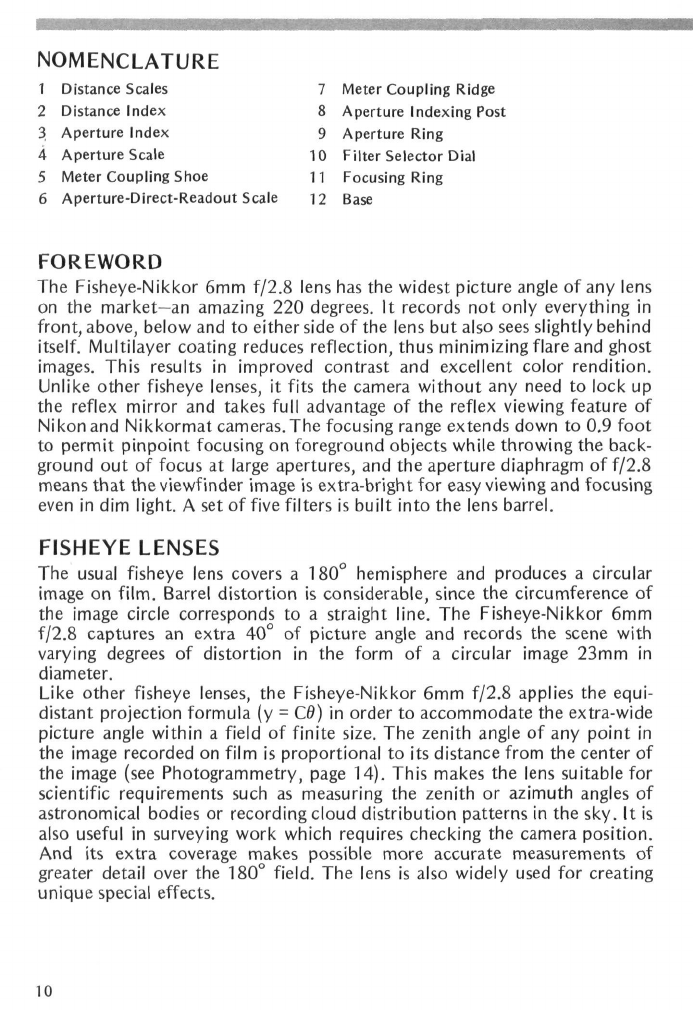
NOMENCLATURE
1 Distance Scales
2 Distance Index
3 Aperture Index
4 Aperture Scale
5 Meter Coupling Shoe
6 Aperture-Direct-Readout Scale
7
8
9
10
11
12
Meter Coupling Ridge
Aperture Indexing Post
Aperture Ring
Filter Selector Dial
Focusing Ring
Base
FOREWORD
The Fisheye-Nikkor 6mm f/2.8 lens has the widest picture angle of any lens
on the market-an amazing 220 degrees. It records not only everything in
front, above, below and to either side of the lens but also sees slightly behind
itself. Multilayer coating reduces reflection, thus minimizing flare and ghost
images. This results in improved contrast and excellent color rendition.
Unlike other fisheye lenses, it fits the camera without any need to lock up
the reflex mirror and takes full advantage of the reflex viewing feature of
Nikon and Nikkormat cameras.The focusing range extends down to 0.9 foot
to permit pinpoint focusing on foreground objects while throwing the back-
ground out of focus at large apertures, and the aperture diaphragm off/2.8
means that the viewf inder image is extra-bright for easy viewing and focusing
even in dim light. A set of five filters is built into the lens barrel.
FISHEYE LENSES
The usual fisheye lens covers a 180° hemisphere and produces a circular
image on
film.
Barrel distortion is considerable, since the circumference of
the image circle corresponds to a straight line. The Fisheye-Nikkor 6mm
f/2.8 captures an extra 40° of picture angle and records the scene with
varying degrees of distortion in the form of a circular image 23mm in
diameter.
Like other fisheye lenses, the Fisheye-Nikkor 6mm f/2.8 applies the
equi-
distant projection formula (y = Cd) in order to accommodate the extra-wide
picture angle within a field of finite size. The zenith angle of any point in
the image recorded on film is proportional to its distance from the center of
the image (see Photogrammetry, page 14). This makes the lens suitable for
scientific requirements such as measuring the zenith or azimuth angles of
astronomical bodies or recording cloud distribution patterns in the sky. It is
also useful in surveying work which requires checking the camera position.
And its extra coverage makes possible more accurate measurements of
greater detail over the 180°
field.
The lens is also widely used for creating
unique special effects.
10


















